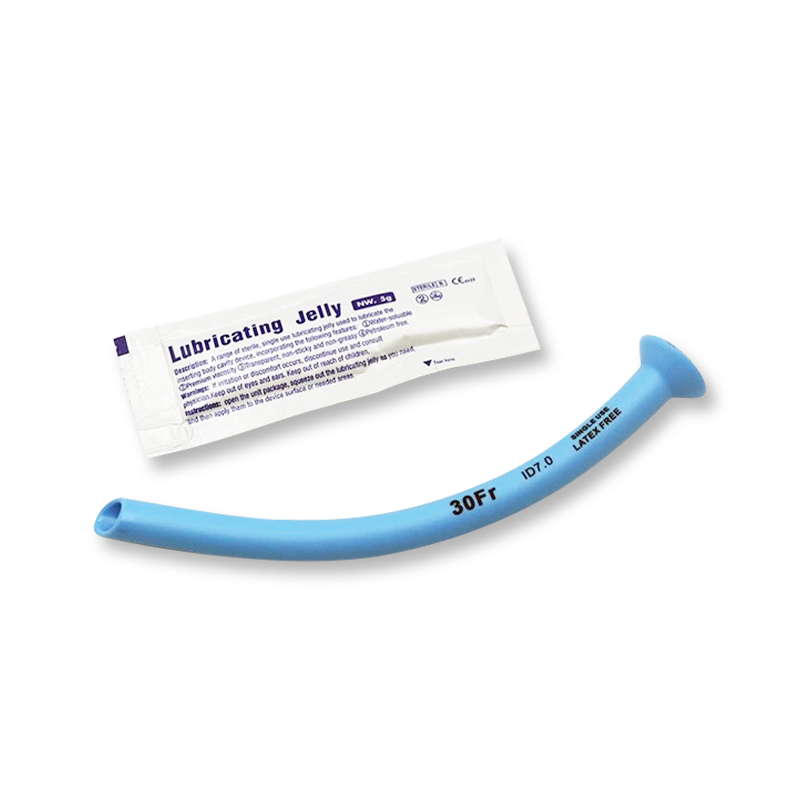TEl: +86-13148388090
Fax:+86-571-88616515
PVC vs. Silicone Nasopharyngeal Airways: Which One Should You Choose?
Author: admin / 2025-09-04In airway management, nasopharyngeal airways (NPAs) are indispensable tools used by paramedics, anesthesiologists, and intensive care providers to keep the upper airway patent. While their function is universal—to bypass soft tissue obstruction in the pharynx—the material from which they are manufactured plays a major role in clinical performance.
Today, most NPAs are made of either polyvinyl chloride (PVC) or medical-grade silicone. Each material offers unique advantages, and understanding these differences helps clinicians and procurement teams make informed decisions. This article compares PVC and silicone NPAs, focusing on patient comfort, safety, durability, and healthcare economics.
PVC Nasopharyngeal Airways

Characteristics
PVC is a widely used thermoplastic material in medical devices due to its affordability, versatility, and structural reliability. NPAs made from PVC are typically semi-rigid yet flexible enough to follow the nasal passage during insertion.
Advantages
- Cost-Effective: PVC Nasopharyngeal Airways NPAs are less expensive to produce, making them attractive for hospitals with high patient turnover or limited budgets.
- Shape Retention: The semi-rigid structure holds its form during insertion, aiding accuracy and reducing the risk of kinking.
- Pre-Lubrication Options: Many PVC Nasopharyngeal Airways NPAs are available in pre-lubricated variants, which streamline emergency use.
Limitations
- Stiffness: Some patients may experience more discomfort during insertion compared to softer materials.
- Temperature Sensitivity: PVC can become less flexible in cold environments, a potential issue in prehospital or military settings.
- Latex-Like Feel: Though PVC Nasopharyngeal Airways NPAs are generally latex-free, their rigidity can occasionally be mistaken for older latex-based devices.
Silicone Nasopharyngeal Airways
Characteristics
Medical-grade silicone is known for its softness, biocompatibility, and long-term resilience. In airway devices, silicone provides a smooth surface that adapts more comfortably to patient anatomy.
Advantages
- Enhanced Comfort: The softness of silicone minimizes mucosal trauma, reducing the risk of epistaxis.
- Biocompatibility: Silicone is hypoallergenic and latex-free, suitable for patients with material sensitivities.
- Adjustable Designs: Many Silicone Nasopharyngeal Airways NPAs incorporate sliding flanges or adjustable plates, allowing secure fixation and preventing over-insertion.
- Durability: Resistant to temperature fluctuations, silicone NPAs maintain performance in diverse environments.
- Limitations
- Higher Cost: Silicone NPAs are generally more expensive, which may impact procurement budgets in high-volume facilities.
- Softer Structure: While comfortable, very soft devices may be prone to bending or folding during insertion if not handled properly.
Clinical Scenarios: Which to Choose?
- Emergency and Prehospital Care: PVC NPAs are advantageous due to their rigidity, affordability, and pre-lubricated options. Paramedics often benefit from their readiness and shape retention in fast-paced scenarios.
- Operating Rooms and ICUs: Silicone NPAs are preferred for patients requiring extended use, such as during prolonged sedation, because of their superior comfort and lower risk of nasal trauma.
- Pediatric Patients: Silicone NPAs are often chosen for children due to the delicate nature of pediatric nasal passages and reduced incidence of bleeding.
- Military and Harsh Environments: Silicone's temperature resilience makes it suitable in extreme climates, whereas PVC may stiffen or become brittle.
Economic and Regulatory Considerations
From a hospital management perspective, both cost and compliance influence material choice:
PVC NPAs are ideal for single-use, disposable applications, especially in high-volume emergency departments.
Silicone NPAs, though more expensive, may be justified in settings where patient comfort, safety, or repeat suctioning is prioritized.
Manufacturers like BEVER Medical ensure both PVC and silicone NPAs meet ISO 13485, CE MDR, and FDA standards, offering healthcare institutions confidence in quality and safety. Additionally, options for OEM customization—such as multilingual packaging, private labeling, and diverse size ranges—provide flexibility for distributors and hospitals worldwide.
Conclusion
Both PVC and silicone NPAs serve the same lifesaving purpose, yet their material differences influence clinical outcomes and patient experiences. PVC devices stand out in cost-efficiency and emergency readiness, while silicone devices excel in patient comfort, durability, and specialized use cases.
Ultimately, the best choice depends on the clinical setting, patient population, and institutional priorities. Hospitals and emergency teams may even stock both types to cover the full spectrum of scenarios. By understanding these differences, healthcare providers can ensure safer, more effective airway management—and manufacturers like BEVER Medical continue to innovate to meet these diverse needs.



